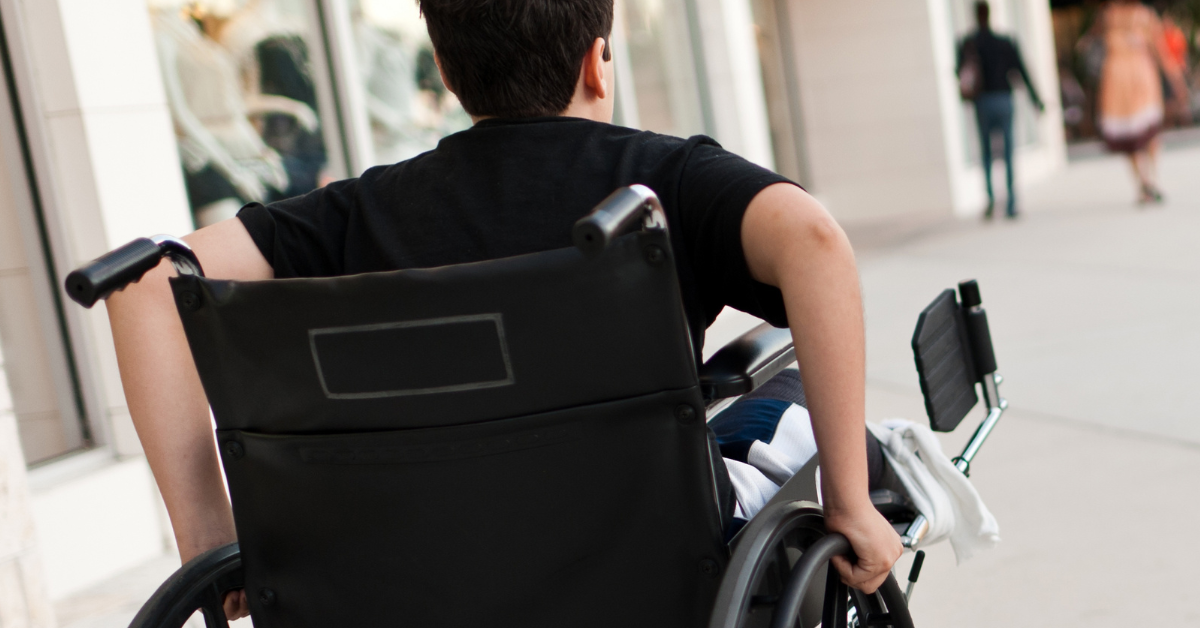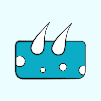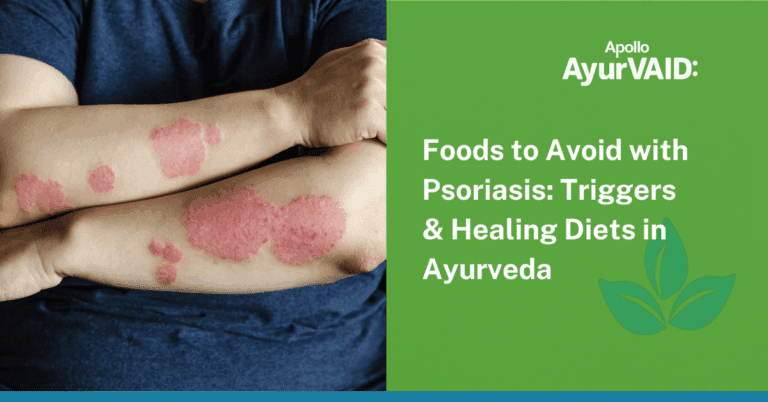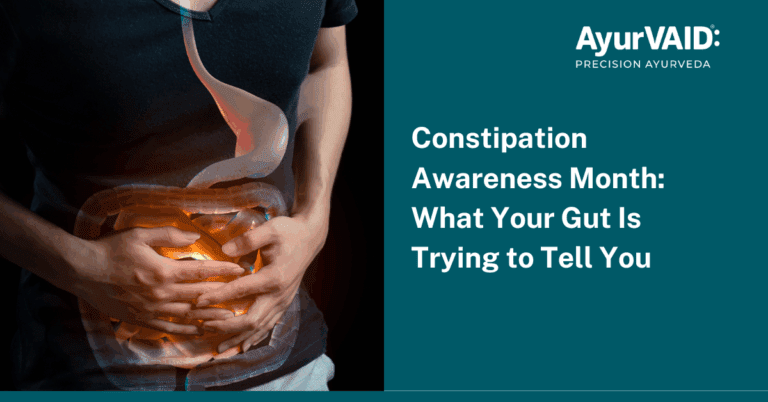Introduction
Muscular Dystrophy (MD) is a group of hereditary diseases, that cause gradual wasting of muscles. It is inherited or can also occur due to mutation in some genes that influence the function of muscles. Knowing the cause is useful in diagnosis, management, and treatment plans.
In Ayurveda, Muscular Dystrophy is caused by dysfunction of Vata dosha, Mamsa, and Medo Dhatu (muscles and fat). It is considered as Adibala Pravritta Vyadhi which translates as inherent hereditary diseases. Ayurveda treatments such as Panchakarma therapies and internal medicines aid in the restoration of balance and muscle tissue repair. These interventions arrest the disease’s progress and increase muscle power and bulk.
This blog focuses on Muscular dystrophy causes, symptoms, types, and treatment. In Ayurveda, there is no cure for MD, but therapies and internal medicines can help to stop the progression of the disease and improve quality of life.
Muscular Dystrophy Causes

Muscular Dystrophy (MD) is primarily caused by genetic mutations that affect muscle proteins, leading to progressive muscle degeneration. The most common form is – Duchenne muscular dystrophy (DMD), which results from a lack of the dystrophin protein (protein for preserving muscle cell integrity). The following are the common causes –
- Genetic Mutations: Specific genes that control the dystrophin-glycoprotein complex (a key muscle structure) weaken the connection between muscle cells and their surrounding support system. It increases the chances of muscle fiber damage.
- Calcium Metabolism: Calcium is needed for muscles to work, but in muscular dystrophy, calcium isn’t metabolized properly in muscle cells. It results in more damage and swelling of the muscle fibers.
- Imbalance in Muscle Repair: Muscles naturally break down and rebuild, but this balance is disturbed in muscular dystrophy. Over time, the body can’t repair or replace muscle proteins fast enough, causing muscle loss.
- Other Contributing Factors: The condition may worsen because of problems with energy production in cells (mitochondrial dysfunction), chronic inflammation, or even the role of gut bacteria.
Muscular Dystrophy Types
Different types of MD are manifested due to differences in gene mutation. For example, Duchenne muscular dystrophy happens when a gene protein (dystrophin), that strengthens muscles doesn’t work properly. The main types include:
- Duchenne Muscular Dystrophy (DMD): The most common type, mainly in boys, caused by dystrophin gene mutations. Symptoms begin in early childhood.
- Becker Muscular Dystrophy (BMD): A milder form of DMD caused due to dystrophin gene mutations. Symptoms appear later and progress more slowly.
- Myotonic Dystrophy: Myotonic Dystrophy is of two types – DM1 and DM2, marked by muscle stiffness and weakness. Abnormal gene expansions cause this condition.
- Limb-Girdle Muscular Dystrophy (LGMD): A group of conditions affecting hip and shoulder muscles. It can be inherited in dominant or recessive ways, with many subtypes.
- Congenital Muscular Dystrophy (CMD): Appears at birth or early infancy, causing muscle weakness due to genetic mutations.
- Facioscapulohumeral Muscular Dystrophy (FSHD): Affects facial muscles, shoulders, and upper arms. Onset and severity vary widely.
Muscular Dystrophy Symptoms
MD is usually diagnosed in children between the ages of 3 and 6. The common symptoms include delayed development, muscle weakness, clumsiness, and unusual calf muscle enlargement due to a buildup of fat and tissue (pseudohypertrophy). As it progresses, it can lead to heart and lung problems because the muscles used for breathing and coughing increase the risk of infections and breathing difficulty. Some children may also develop scoliosis, where the spine curves abnormally. Learning difficulties, trouble focusing, or nightmares can happen in some cases.
Muscular Dystrophy Treatment
Muscular dystrophy (MD) treatments include medications, physical therapy, occupational therapy, and assistive devices. There is no Muscular Dystrophy cure in Ayurveda or any other system of medicine, but treatments can help with symptoms and prevent complications.
Understanding MD in Ayurveda
Muscular dystrophy is considered Meda-Mamsa Dhatu Dusthi (dysfunction of fat and muscle tissues) in Ayurveda, a progressive condition resulting from Vata aggravation, tissue degeneration, and obstruction of channels, aligning it with Jataharini, an incurable childhood disorder described in Kashyapa Samhita. It is primarily caused by Beeja Dushti (genetic defects) and Adibala Pravritta (hereditary factors), which lead to Vata imbalance and structural weakness (Khavaigunya) at the Mamsa Dhatu (muscle tissue) level. Genetic mutations (Beeja Bhaga Avyava Dusti) and Dhatvagni Mandhya (impaired tissue metabolism) result in Dhatu Kshaya (muscle degeneration) and the Ama (accumulation of toxins).
Ayurveda treatment for Muscular Dystrophy
The treatment approach for MD in Ayurveda is divided into three levels. The general principles of treatment include Srotoshodhana (Channel Cleansing) to clear obstructions in microchannels, Dhatwagni Deepana (Enhancing Tissue Metabolism), and Brumhana Chikitsa (Nourishment Therapy) to rebuild and strengthen depleted tissues using nourishing formulations. Ayurveda aims to alleviate symptoms like muscle weakness and stiffness, nourish muscle tissues, improve mobility and quality of life, and delay the disease progression.
- External treatments include Abhyanga, which nourishes muscles, relieves pain, and improves circulation.
- Swedana (fomentation therapy) includes Shastika Shali Pinda Sweda, which relieves pain and provides relaxation.
- Udvartana (medicated powder massage) improves lymphatic circulation, stimulates nerve endings, reduces fat, and alleviates muscle stiffness and spasticity.
Internal medicines which have Rasayana (Rejuvenation) properties are prescribed.
Apollo AyurVAID uses classical Ayurveda treatment protocols to treat the root cause of diseases. After assessing symptoms, and history, and understanding the patient, a specific treatment plan is designed. The approach aims to manage pain by breaking the disease’s pathogenesis, correcting the root cause, and preventing further progression. Ayurveda doctors and rehabilitation specialists recommend ergonomics, nutrition, and lifestyle changes. AyurVAID offers evidence-based clinical solutions for better care and quality of life.

Conclusion
Muscular Dystrophy (MD) is a genetic disorder where muscle becomes weak and degenerative. The comprehensive Ayurveda interventions include Panchakarma therapies, external treatments like Abhyanga and Swedana, and internal medications that rejuvenate the tissues, prevent disease progression, improve quality of life, and alleviate the symptoms. These treatments intend to relieve muscle weakness, aid in the patient’s mobility, reduce pain and support the overall wellness of patients. Integrating modern medical understanding with traditional Ayurveda principles could slow disease progression, and improve quality of life.
References
- Arora, S, Arora, C (2022). A REVIEW ON CONCEPTUAL STUDY OF MUSCULAR DYSTROPHIES: AN AYURVEDIC PERSPECTIVE. International Journal of Research in Ayurveda and Pharmacy. https://doi.org/10.7897/2277-4343.130121
- Russo, C et al. (2024). The Gut Microbiota Involvement in the Panorama of Muscular Dystrophy Pathogenesis. International Journal of Molecular Sciences, 25. https://doi.org/10.3390/ijms252011310
- Shalini, D, Alam, J (2024). Muscular Dystrophies: An Update Review. International Journal of Innovative Science and Research Technology (IJISRT) https://doi.org/10.38124/ijisrt/ijisrt24may507
- Konieczny, P. (2024). Systemic Treatment of Body-Wide Duchenne Muscular Dystrophy Symptoms. Clinical pharmacology and therapeutics. https://doi.org/10.1002/cpt.3363
- Dosani, M, Singhal, H (2024). An Ayurvedic Approach in Muscular Dystrophy in Children. International Journal of Health Sciences and Research. https://doi.org/10.52403/ijhsr.20240318’
- Rathi, R. et al. (2023). Relevance of Ayurveda Management in Duchenne Muscular Dystrophy to Augment the Quality of Life- A Pediatric Case Report. International Journal of Life Science and Pharma Research. https://doi.org/10.22376/ijlpr.2023.13.5.l322-l330






